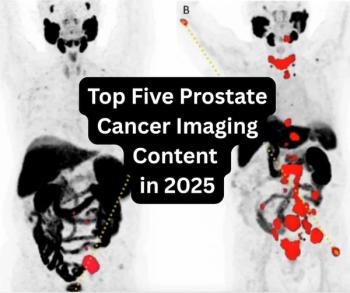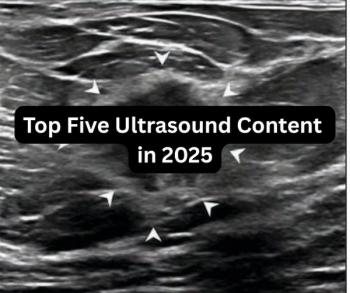
New Meta-Analysis Details Most Common Brain MRI Findings with COVID-19
The most common brain MRI findings associated with COVID-19 included acute/subacute infarction in 22 percent of patients and cerebral microbleeds in 17 percent of patients.
More than a third of people with COVID-19 have neurological manifestations and a newly published meta-analysis reveals the most common abnormality findings on magnetic resonance imaging (MRI) that are associated with the disease.
For the meta-analysis, recently published in the
The study authors found that acute and subacute infarctions occurred in 22 percent of patients with symptomatic COVID-19. Researchers also pointed out a significant prevalence of olfactory bulb abnormalities (22 percent), white matter abnormalities (20 percent) and cerebral microbleeds (17 percent). Other MRI findings included grey matter abnormalities (12 percent), leptomeningeal enhancement (10 percent), acute disseminated encephalomyelitis (ADEM) or ADEM-like lesions (10 percent); non-traumatic intracerebral hemorrhage (ICH) (10 percent), according to the study.
In what may be the first meta-analysis specific to the use of brain MRI in patients with COVID-19, the researchers noted over 20 different brain MRI findings associated with the disease.
“We believe that systematic analyses such as we have sought to share should assist clinicians (in further advancing) their knowledge and understanding of common neuroimaging findings among patients afflicted with COVID-19 and could help elaborate the particular utility of cross-sectional studies such as MRI in diagnosing and treating the COVID patient population,” wrote lead meta-analysis author Amir Masoud Afsahi, M.D., who is affiliated with the Department of Radiology at the University of California-San Diego, and colleagues.
(Editor’s note; For related content, see “
Other reported MRI findings, occurring in less than 10 percent of the meta-analysis patient population, ranged from cranial neuropathy and basal ganglia abnormalities to venous thrombosis and cytotoxic lesions of corpus callosum.
The study authors maintained that comprehensive assessment of the central nervous system in patients with COVID-19 should include brain imaging.
“Functional imaging modalities, namely (functional) MRI and FDG (fluorodeoxyglucose)-PET are highly qualified techniques that can play a substantial role in determining functional aftermaths of COVID-19 related structural abnormalities in brain and their trend over time,” emphasized Afsahi and colleagues.
In regard to the limitations of the meta-analysis, the researchers acknowledged small sample sizes for most of the reviewed studies and considerable heterogenicity with respect to study protocols, designs and settings. Afsahi and colleagues also conceded that the meta-analysis findings may not be applicable to the general population as a considerable number of the included patients were older in age and critically ill.
Newsletter
Stay at the forefront of radiology with the Diagnostic Imaging newsletter, delivering the latest news, clinical insights, and imaging advancements for today’s radiologists.




























